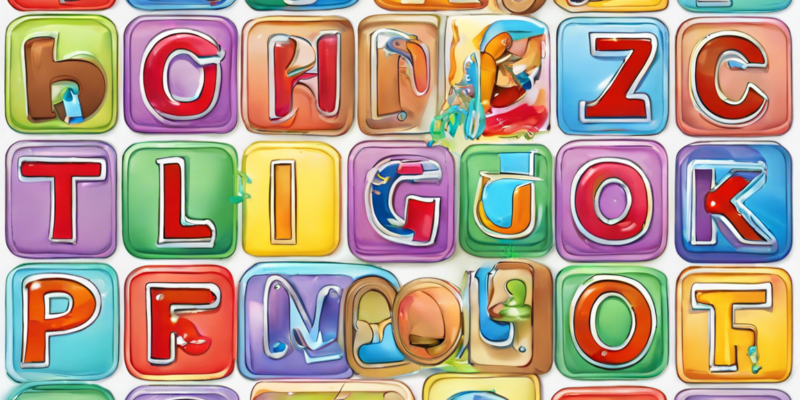Phonics is a crucial aspect of language development, as it provides the building blocks for reading and spelling. Understanding the relationship between letters and sounds is essential for children as they embark on their literacy journey. In this comprehensive guide, we will explore the A to Z of phonic sounds, discussing the key concepts, strategies, and resources to help both parents and educators support children in mastering phonics.
The Basics of Phonics
What is Phonics?
Phonics is a method for teaching reading and writing that focuses on the relationship between letters and the sounds they represent. By learning phonics, children can decode words by recognizing the sounds that different letters or letter combinations make.
Why is Phonics Important?
Understanding phonics is essential for developing reading skills. By mastering phonics, children can become more proficient readers and spellers. Phonics instruction helps children decode unfamiliar words, recognize familiar words more quickly, and improve their overall reading comprehension.
Phonemic Awareness vs. Phonics
Phonemic awareness is the ability to hear, identify, and manipulate individual sounds in spoken words. Phonics, on the other hand, involves connecting these sounds to written letters. While phonemic awareness is more about oral language, phonics deals with the relationship between sounds and letters in written language.
Teaching Phonics
The Phonics Alphabet
The English language has 26 letters, each of which can represent one or more sounds. Teaching the relationship between each letter and its corresponding sound is the foundation of phonics instruction.
Phonics Rules and Patterns
In addition to learning individual letter sounds, children must also understand phonics rules and patterns. These rules govern how letters behave in different positions within words and can help children decode unfamiliar words more easily.
Phonics Strategies
- Blending: Combining individual sounds to decode a word.
- Segmenting: Breaking a word into individual sounds.
- Sight Words: Teaching common words that do not follow phonetic patterns.
- Word Families: Groups of words with a common ending or rime.
Phonics Activities and Games
Making phonics fun and engaging can help children stay motivated and interested in learning. Activities such as phonics puzzles, word hunts, and rhyming games can reinforce phonics skills in an enjoyable way.
Resources for Teaching Phonics
Phonics Workbooks
Workbooks are a great way to provide structured practice for children learning phonics. Look for workbooks that cover letter sounds, blends, digraphs, and sight words.
Phonics Apps and Websites
There are numerous educational apps and websites that offer interactive phonics games and activities. These resources can provide additional practice and reinforcement outside of the classroom.
Phonics Readers
Phonics readers are books specifically designed to help children practice their phonics skills. These books often contain simple, decodable text that reinforces the letter-sound relationships children are learning.
Phonics Songs and Videos
Music and videos can be powerful tools for learning. Look for phonics songs and videos that reinforce letter sounds, blends, and sight words in a catchy and memorable way.
Common Challenges in Phonics Instruction
Dyslexia and Phonics
Children with dyslexia may struggle with phonics due to difficulties in processing and recognizing sounds and letters. Multisensory approaches and targeted interventions can help support these learners.
English Language Learners (ELL) and Phonics
ELL students may face challenges with phonics due to differences in their native language sound systems. Explicit instruction that addresses these differences can support ELL students in mastering phonics.
Inconsistencies in English Spelling
The English language is known for its inconsistent spelling patterns. Teaching children about sight words and common exceptions can help them navigate these complexities.
FAQs about Phonics:
1. What is the best age to start teaching phonics?
Answer: Phonics instruction can begin as early as preschool, around the ages of 3-4.
2. How can parents support phonics learning at home?
Answer: Parents can read with their children, play phonics games, and practice letter sounds together.
3. Are there different approaches to teaching phonics?
Answer: Yes, approaches to phonics instruction can vary, including synthetic phonics, analytical phonics, and embedded phonics.
4. How long does it take to master phonics skills?
Answer: Mastery of phonics skills can vary, but consistent practice and reinforcement are key.
5. How can I assess a child’s phonics progress?
Answer: Use assessment tools such as phonics screening checks, reading fluency assessments, and observation of decoding skills.
In conclusion, mastering the A to Z of phonics sounds is a crucial step in developing strong reading and spelling abilities. By providing structured instruction, engaging activities, and targeted support for diverse learners, parents and educators can help children unlock the world of literacy through phonics.

